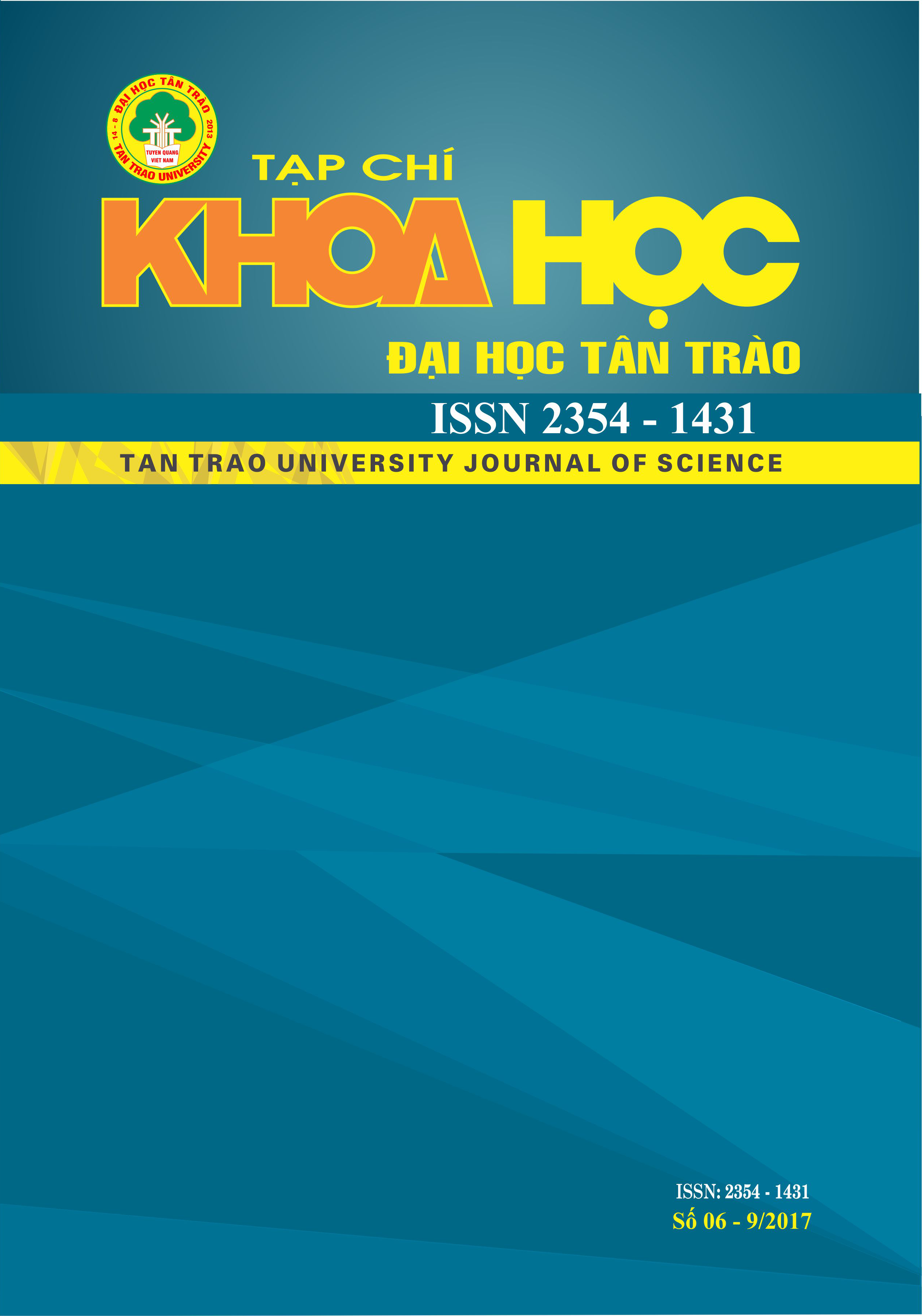Nghiên cứu tính chất đất dốc tại huyện Phú Lương tỉnh Thái Nguyên
DOI:
https://doi.org/10.51453/2354-1431/2017/130Keywords:
Sloping land;Phu luong district; NDVI.Abstract
Study on sloping land propertiesin Phu Luong District shows that the soil environment is influenced by two main factors: climate and human resources. The influence of rainfall on vegetation (NDVI index) affects the distribution of plants. At different slopping gradients, there are different NDVI index and different types of vegetation at different slopes have different soil properties. The soil has a high level of sour to medium sour, total nitrogen content and total humus levels are poor to medium, low K2O content, low P2O5 content, Ca2 + exchanged in the soil in low to medium, the content of Mg2+ exchange rate is very low to low, heavy metal contents (As, Pb, Cd) are lower than Vietnamese standard regulation (QCVN 03-MT). On rice growing land and tea have a higher heavy metal contents than forest plants such as acacia. Residue levels of plant protection chemicals have not been detected.
Downloads
References
1. Lê Thị Thu Hiền (2013). Áp dụng chỉ số thực vật (NDVI) của ảnh landsat đánh giá hoang mạc hóa tỉnh Bình Thuận, Tạp chí các Khoa học về Trái đất;
2. Đỗ Thị Vân Hương (2014).Nghiên cứu, đánh giá tài nguyên sinh khí hậu vùng Đông Bắc Việt Nam cho phát triển một số cây trồng nông, lâm nghiệp có giá trị kinh tế, Luận án Tiến sỹ chuyên ngành, địa lý Tài nguyên và Môi trường, Viện Hàn lâm Khoa học và Công nghệ Việt Nam;
3. Nguyễn Công Vinh, Mai Thị Lan Anh (2011), Quản lý và sử dụng đất dốc bền vững ở việt nam, Nxb Đại Học Quốc Gia Hà Nội;
4. Wanli Huang, Beicheng Xia, Zhimin Zeng, Guangfa Lin (2008), The Relationship between NDVI, Stand Age and Terrain Factors of Pinus elliottii Forest”, ISBN:pp.232-236.
Downloads
Published
How to Cite
Issue
Section
License

This work is licensed under a Creative Commons Attribution-ShareAlike 4.0 International License.
All articles published in SJTTU are licensed under a Creative Commons Attribution-ShareAlike 4.0 International (CC BY-SA) license. This means anyone is free to copy, transform, or redistribute articles for any lawful purpose in any medium, provided they give appropriate attribution to the original author(s) and SJTTU, link to the license, indicate if changes were made, and redistribute any derivative work under the same license.
Copyright on articles is retained by the respective author(s), without restrictions. A non-exclusive license is granted to SJTTU to publish the article and identify itself as its original publisher, along with the commercial right to include the article in a hardcopy issue for sale to libraries and individuals.
Although the conditions of the CC BY-SA license don't apply to authors (as the copyright holder of your article, you have no restrictions on your rights), by submitting to SJTTU, authors recognize the rights of readers, and must grant any third party the right to use their article to the extent provided by the license.


